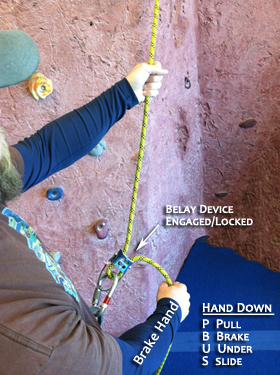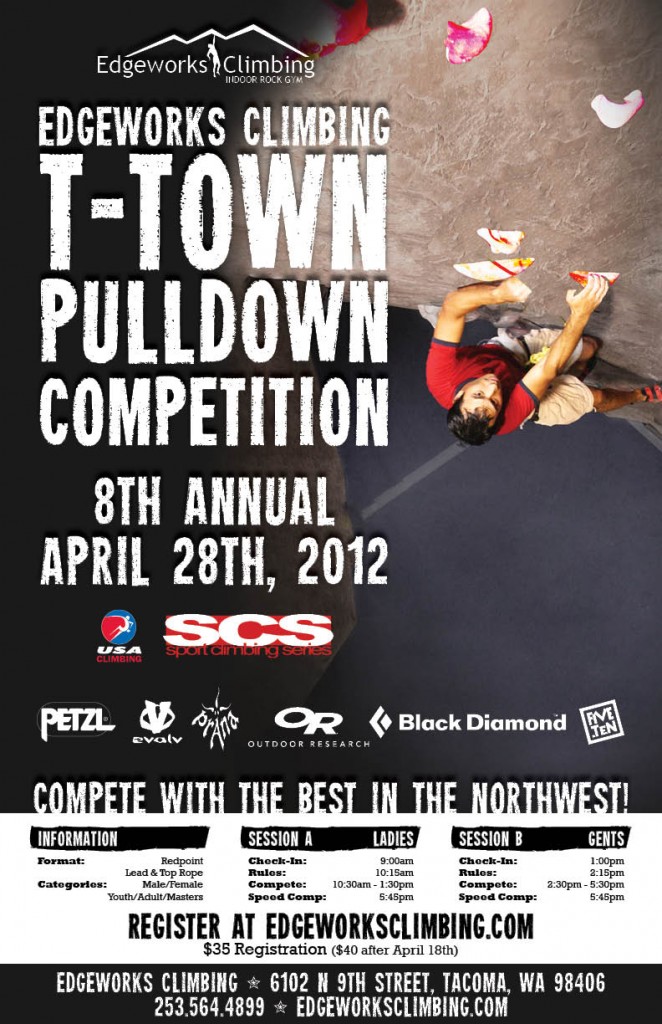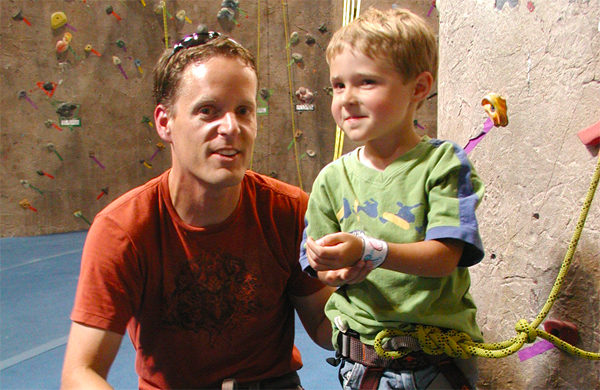It’s always interesting to see the different techniques that people use to belay; generally the differences stem from when the person was taught or when that instructor was taught themselves. Belay methods have evolved over the history of climbing as equipment improved and the knowledge of how to use that equipment has improved. Unfortunately as all that improvement occurs, someone who has already learned how to belay doesn’t always update their methods. Thankfully there are many different ways to belay, old or new, that are still safe (and contrary to rumors, there are many ways to pass a belay test at Edgeworks).
—————————————————
BELAY HISTORY 101:
So what has changed? From the beginning, belaying took leaps and bounds in safety when it moved from the Hip Belay (no equipment other than the rope wrapped around your hip!) to incorporating equipment like harnesses and carabiners and using a knot/hitch called the Munter Hitch to provide friction. Eventually instead of belaying using a friction hitch, belay devices such as stitch plates and then tuber devices (i.e. Black Diamond ATC) were introduced; this improved the effectiveness of the belay even further. What didn’t change was that way you handled the rope was still very much the same as if you were still doing the Hip Belay.
This belay method that has been used for decades (if not well over 100 years) is often times called the Hands Up or the Slip Slap Slide method; basically it is the method where you hold both hands up in front of you in order to belay. It was the only way to do a Hip Belay, and it worked well as the belay equipment evolved. It is a safe belay method (when managed properly) and it is still used today (though very much fading from use).
—————————————————
Sometime in the early 2000’s a new belay method came into vogue called the Hands Down or the PBUS. This method caught up to and made better use of today’s belay devices by using a hands down method that keeps the your hands below the belay device. This method is now the standard for climbing gyms, climbing schools and guide companies to teach. Anyone receiving professional instruction will most certainly be taught this method.
So what is PBUS and what’s different? PBUS stands for “Pull, Brake, Under, Slide” and the major difference is that the brake hand is UNDER the belay device in its resting position thus the device is always locked and ready to catch a fall, unless you are pulling rope. With the old Hands Up method, the belay device was always in the open/pulley position, and the only way to catch a fall was to engage your brake hand downward.
How can you tell the difference?:
Hands Down (Pull, Brake, Under, Slide): (1) Your brake hand thumb is closest to the belay device when gripping the rope; (2) Your hand naturally rests below the belay device; (3) The Belay device is naturally in the locked position to catch a fall.
Hands Up (Slip, Slap, Slide): (1) Your brake hand pinky is closest to the belay device when gripping the rope; (2) Your hand naturally rests above the belay device, leaving both hands and both ropes parallel to each other; (3) The Belay device is naturally in the unlocked/pulley position, unable to catch a fall.
| Hands Down (PBUS) |
Hands Up (SSS) |
 |
 |
The Hands Down (PBUS) method was a dramatic shift in effectiveness of the belay by allowing new and non-attentive belayers to catch falls without making an action to brake (they already are!). A side benefit was that it also increased the strength of the belay hand by putting stronger fingers (pointer and middle fingers) in the position of strength/grip rather than the pinky and the ring fingers.
If you haven’t seen the Hands Down (PBUS) method have one of the Edgeworks Staff demonstrate it, or take a look around at other belayers, you are sure to see the majority of them belaying Hands Down a better method.












